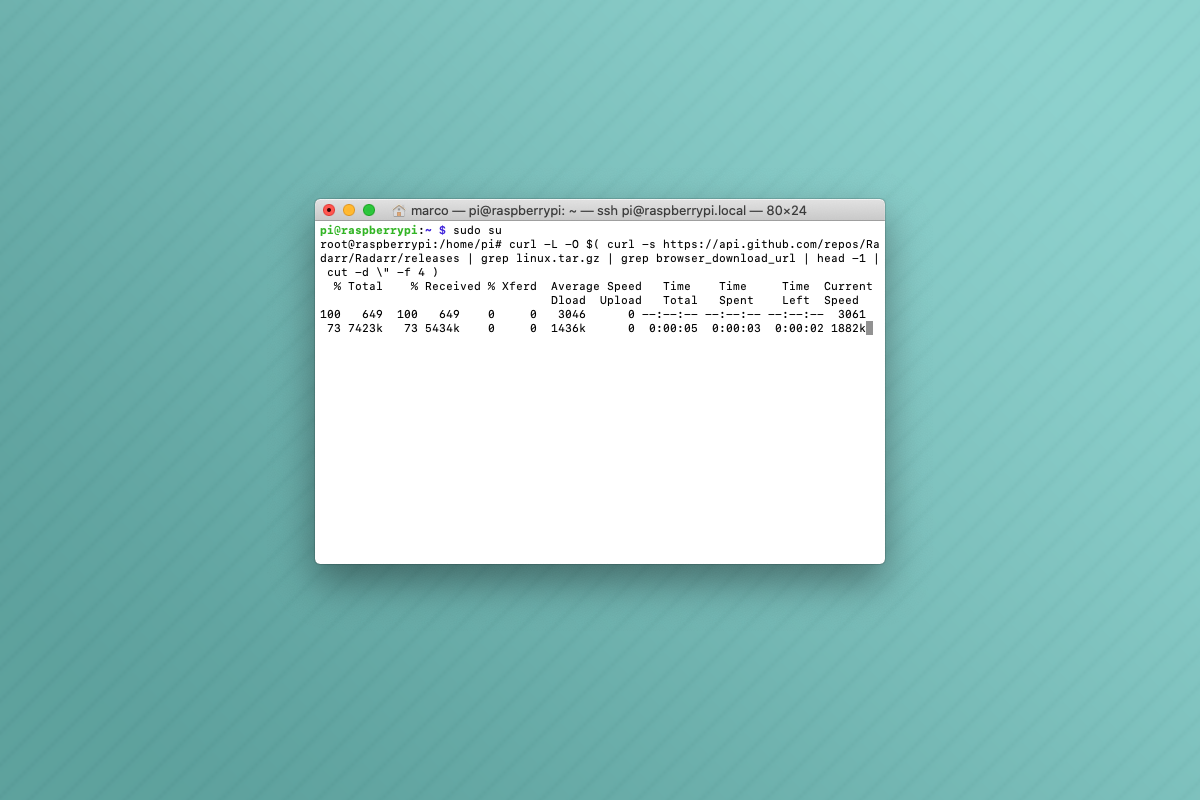Come sempre, se volete installare Radarr sul Raspberry Pi, aprite il terminale ed eseguite:
sudo su curl -L -O $( curl -s https://api.github.com/repos/Radarr/Radarr/releases | grep linux.tar.gz | grep browser_download_url | head -1 | cut -d \" -f 4 ) tar -xvzf Radarr.develop.*.linux.tar.gz mv Radarr /opt chown -R pi:pi /opt/Radarr

Anche qui, come con Bazarr, installate il servizio:
sudo nano /etc/systemd/system/radarr.service
E incollate:
[Unit] Description=Radarr Daemon After=syslog.target network.target [Service] # Change the user and group variables here. User=pi Group=pi Type=simple # Change the path to Radarr or mono here if it is in a different location for you. ExecStart=/usr/bin/mono --debug /opt/Radarr/Radarr.exe -nobrowser TimeoutStopSec=20 KillMode=process Restart=on-failure # These lines optionally isolate (sandbox) Radarr from the rest of the system. # Make sure to add any paths it might use to the list below (space-separated). #ReadWritePaths=/opt/Radarr /path/to/movies/folder #ProtectSystem=strict #PrivateDevices=true #ProtectHome=true [Install] WantedBy=multi-user.target
Abilitate il servizio:
sudo systemctl enable --now radarr.service
Ora andate su http://raspberrypi.local:7878
Il file di configurazione (da utilizzare nel caso dobbiate esportare tutta la vostra configurazione) sarà in:
/home/pi/.config/Radarr
Se invece installare Sonarr, andate qui.